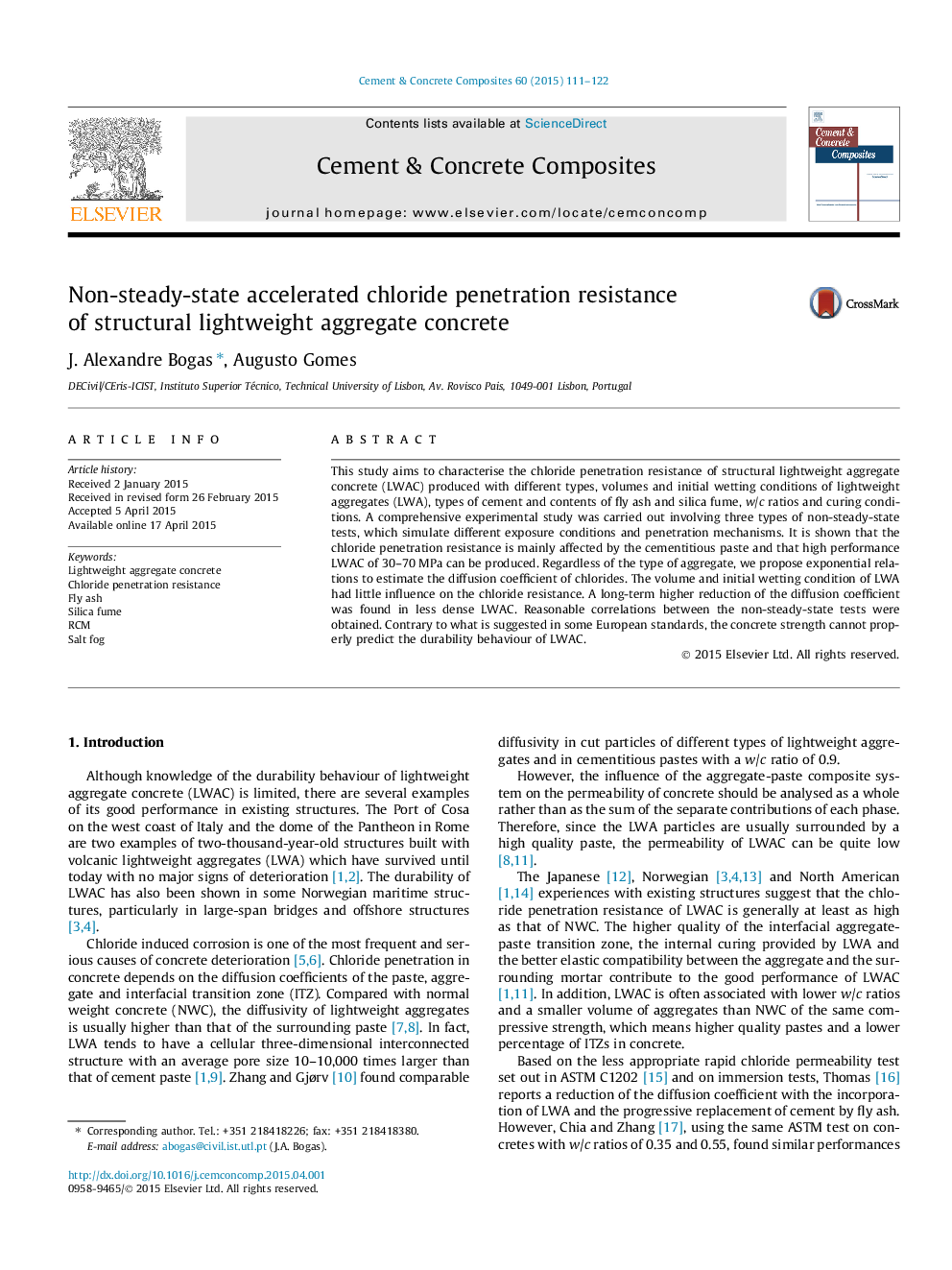| Article ID | Journal | Published Year | Pages | File Type |
|---|---|---|---|---|
| 1454383 | Cement and Concrete Composites | 2015 | 12 Pages |
This study aims to characterise the chloride penetration resistance of structural lightweight aggregate concrete (LWAC) produced with different types, volumes and initial wetting conditions of lightweight aggregates (LWA), types of cement and contents of fly ash and silica fume, w/c ratios and curing conditions. A comprehensive experimental study was carried out involving three types of non-steady-state tests, which simulate different exposure conditions and penetration mechanisms. It is shown that the chloride penetration resistance is mainly affected by the cementitious paste and that high performance LWAC of 30–70 MPa can be produced. Regardless of the type of aggregate, we propose exponential relations to estimate the diffusion coefficient of chlorides. The volume and initial wetting condition of LWA had little influence on the chloride resistance. A long-term higher reduction of the diffusion coefficient was found in less dense LWAC. Reasonable correlations between the non-steady-state tests were obtained. Contrary to what is suggested in some European standards, the concrete strength cannot properly predict the durability behaviour of LWAC.
